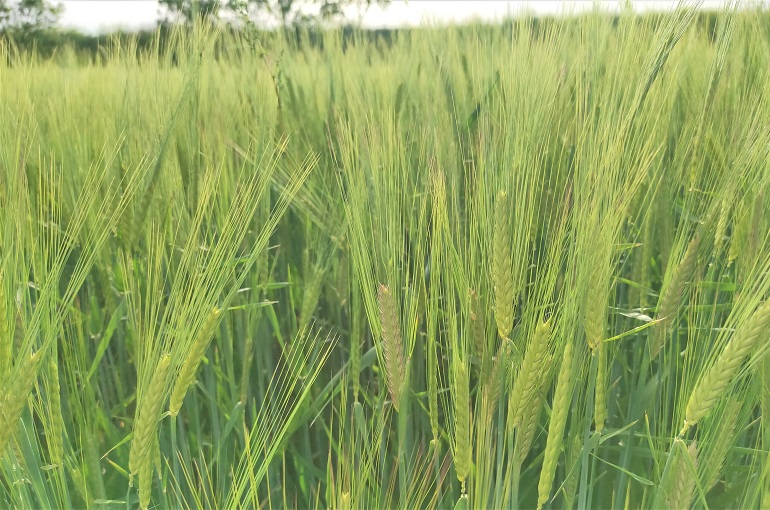Principles for selecting the best Barley Variety

This post is also available in:
This post is also available in:
![]() Español (Spanish)
Español (Spanish) ![]() Français (French)
Français (French) ![]() Deutsch (German)
Deutsch (German) ![]() Nederlands (Dutch)
Nederlands (Dutch) ![]() हिन्दी (Hindi)
हिन्दी (Hindi) ![]() العربية (Arabic)
العربية (Arabic) ![]() Türkçe (Turkish)
Türkçe (Turkish) ![]() 简体中文 (Chinese (Simplified))
简体中文 (Chinese (Simplified)) ![]() Ελληνικά (Greek)
Ελληνικά (Greek) ![]() Português (Portuguese (Brazil))
Português (Portuguese (Brazil)) ![]() polski (Polish)
polski (Polish)
Selecting the most appropriate variety for a specific field is one of the most critical factors affecting barley cultivation’s success. The primary classification of the currently registered barley varieties is based on their biological and economic characteristics meeting the growing conditions. Molecular markers on protein level and DNA techniques are used to characterize different varieties (Tomka et al., 2015).
It’s a fact that nowadays, the number of varieties increases more and more, making it difficult for farmers to select the most appropriate one for their field. Each variety has agronomic (yield, quality, disease, agronomy) advantages and disadvantages. However, there is a general skeleton of traits that the farmer has to take into consideration when it comes to variety selection (1):
- Crop use
- Disease prevalence
- Herbicide tolerance
- Yield potential
The variety selected must be suitable for each environment and farming system, suitable for the intended sowing time, and able to be segregated in storage in the case of malting varieties (Matthews et al., 2014).
Barley varieties can be categorized in several ways. For example, one categorization could refer to the final use of the plant (2):
- General Purpose – Animal feed. The majority of barley is used for this purpose.
- Malting. This is the second most important use of barley.
- Food
Another categorization could be (2):
- Covered→In this type of variety, the outer hull remains attached after harvesting. Covered barley varieties can be either two-row or six-row.
- Hulless→In this case, the outer hull is not tightly adhered to the kernel. More precisely, the outer hull is so loose that it is removed when this type of barley is harvested in the field. Processors and experts use the term “naked” to refer to this type of barley. Hulless barley varieties may be two-row or six-row.
- Two-row→There are two rows of kernels along the head’s length. Wild barley belongs to this type of variety.
- Six-row→There are six rows of kernels along the head’s length, arranged in two groups of three kernels. This type of variety is the dominant cultivated one.
- The four-row→ It is loose six-row barley.
A grower should also consider some other factors when selecting the best barley variety for their field needs, such as the variety’s physical characteristics or disease sensitivity that could reduce yields. Some varieties are more susceptible to lodging (falling over in the field due to high winds and/or late-season rainfall) or shatter (dropping grain from the seed head before harvest). Compared with other small grains, malting barley is generally more prone to shatter and should be treated accordingly (3).
Tip: In any case, it is highly advised to test the one or multiple varieties you have chosen in a smaller field area before using it as your main variety for cultivation. This test will give you a better picture of how this variety behaves in your field. Moreover, it is best to avoid monoculture with only one variety to scutter the danger of abiotic and biotic stresses by selecting varieties with different characteristics of interest.
References
- https://grdc.com.au/resources-and-publications/grownotes/crop-agronomy/barley-west/GrowNote-Barley-West-2-Pre-planting.pdf
- https://www.grainscanada.gc.ca/en/grain-quality/official-grain-grading-guide/06-barley/classes-types-varieties.html
- https://ucanr.edu/sites/small-grains/files/337345.pdf
- Matthews, P., McCaffery, D., Jenkins, L. (2014) Winter crop sowing guide 2014. NSW Department of Primary Industries, http://www.dpi.nsw.gov.au/agriculture/broadacre/guides/winter-crop-variety-sowing-guide
- Tomka, M., Chňapek, M., Gálová, Z., Urminská, D. (2015) The differences between the old and new barley varieties on the basis of hordein polymorphism with respect to qualitative parameters, JMBFS, Slovak republic.
Barley History, Plant Information, and Nutritional Value
Principles for selecting the best Barley Variety
Barley Soil preparation, Soil requirements, and Seeding requirements
Barley Irrigation Requirements and Methods
Barley Fertilization Requirements and Methods








































































